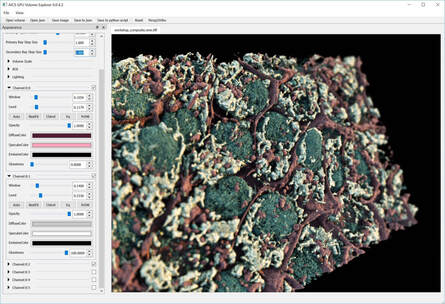Available Software
|
AGAVE
Advanced GPU Accelerated Volume Explorer
|
|
Available code
|
AICSImageIO: a Python library for reading & writing microscopy images of various formats. AICSImageIO also provides services to unify and convert image metadata. Find detailed documentation here. |
CytoDL: aims to unify and simplify deep learning projects while making them modular and reproducible in order to advance understanding of 2D and 3D biological data as images, point clouds, or tabular data. |
|
The Allen Cell & Structure Segmenter: a Python-based open source toolkit developed at the Allen Institute for Cell Science for 3D segmentation of intracellular structures in fluorescence microscope images. |
Programmatic Data Access Jupyter Notebook: Learn how to download and access Allen Institute data using Quilt via a Jupyter Notebook. |
Analysis code for the manuscript Cell states beyond transcriptomics: integrating structural organization & gene expression in hiPSC-derived cardiomyocytes.
GitHub notebook for figures produced for the study.
GitHub notebook for figures produced for the study.
|
Label-free Determination: Label-free prediction of three-dimensional fluorescence images from transmitted light microscopy Cell Shape Analysis Jupyter Notebook: What shape are our human induced pluripotent stem cells? Use a Jupyter notebook to help build intuition about shape across the population of cells available in the Allen Cell Collection. |
Integrated Cell: Image-driven generative cell modeling with adversarial autoencoders |
More coming soon...
Our goal is to make all tools and software developed at the Institute publicly available once they are useful and robust. In the coming year, we will begin to post the code for various projects into open-source repositories.
With a goal of practicing and promoting open science, we use and develop open-source software whenever possible and practical. Licensing will be described as the software is released.
With a goal of practicing and promoting open science, we use and develop open-source software whenever possible and practical. Licensing will be described as the software is released.

